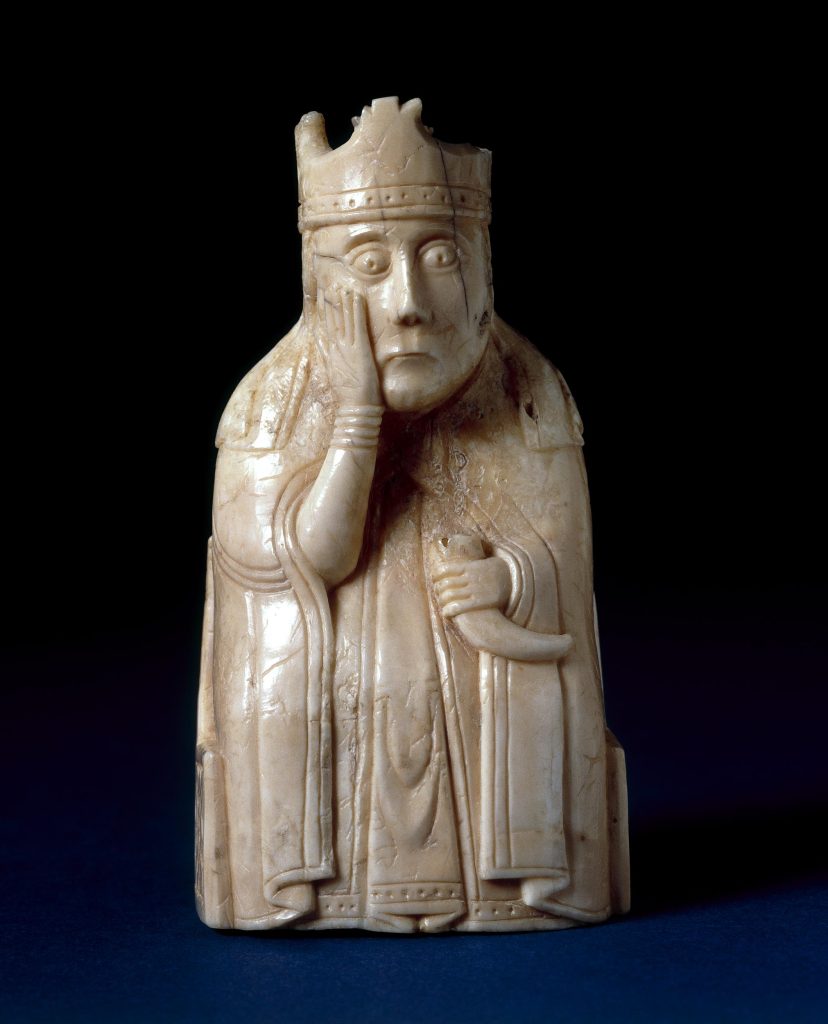


Modern study of medieval iconography inevitably entails grappling with exceptions and the rupture of expectations. No sooner might scholars settle on an expected visual formula—Cain killing Abel with his farmer’s hoe, Saint George riding his snowy steed—than we’re pulled up by an image that flouts those rules. In the fifteenth-century Alba Bible, Cain sinks his teeth directly into his brother’s neck, arguably in reference to Jewish exegesis, while in some Byzantine and post-Byzantine icons of St. George, a small boy carrying a cup rides with the saint, inspiring a semi-serious modern tradition concerning George’s love of coffee. Other iconographic traditions seem to emerge out of the blue, as did the distinctive type known as the Virgin of Humility, which flowered suddenly in Mediterranean cities in the 1340s. Such unruly iconographies both intrigue and disappoint us: they engage yet disobey our expectations, and we are left to wonder why.
The culprit in such cases is less often a rogue medieval work of art than the rigidity of modern scholarship. Despite ample evidence to the contrary, the assumption that medieval iconographic norms were formulaic, authoritative, and above all universally obeyed still shapes the way modern scholars analyze the imagery they study. Even after the poststructuralist turn, art historians have continued to wrestle with expectations deeply embedded in the discipline: that medieval artists preferred to copy or turn to text rather than to innovate; that unprecedented iconography must be based on a lost original; that patrons or learned advisors must have directed artists’ work; that traditions translated smoothly across media, formats, and contexts; that all viewers read and understood the images they saw in the same way. Underlying many of these assumptions has been a wider one: that the ideas of greatest value must be tracked to artists rooted in cosmopolitan centers, rather than to artists and works of art that circulated freely throughout their peripheries.
The conference “Unruly Iconographies? Examining the Unexpected in Medieval Art” aims to open a new conversation about medieval images that don’t follow the rules. We call for papers, drawn from any area of the medieval world broadly defined, that ask both speakers and audience to rethink the unspoken paradigms that have decided which iconographic motifs are canonical and which are “singular,” “exceptional,” or even “mistakes.” At the broadest level, we seek to problematize the binaries on which these paradigms were founded: tradition versus invention, canon versus exception, and center versus periphery. At a more specific one, we invite deeply researched case studies whose particularities can lead scholars to a more effective, contextually sensitive, and historically informed approach to the study of images and image-making in the Middle Ages.
“Unruly Iconographies?” will take place on November 9, 2024 at the Index of Medieval Art at Princeton University, following the Weitzmann Lecture by Dr. Brigitte Buettner, held on November 8 and hosted by Princeton’s Department of Art & Archaeology. It also will constitute the first of two internationally linked events, the second of which will be a site-based seminar at the Center for the Art and Architectural History of Port Cities “La Capraia” in Naples in June 2025. Whereas the Index conference will consider broadly disciplinary questions about methodology, theory, and models, the Naples conference, hoped to be the first of several site-based conferences of this kind, takes southern Italy as a laboratory for exploring the relationships between iconography and place within a geographically expanded Middle Ages, focusing on the potentials and limits of the study of iconography in southern Italy. Details about this conference will be available in Summer 2024.
Submissions for the Princeton-based conference are invited by April 1, 2024. They should include a one-page abstract and c.v. and be sent to fionab@princeton.edu. Travel and hotel costs for the eight selected speakers will be covered by the Index. Speakers will be informed of their selection no later than May 1, 2024.